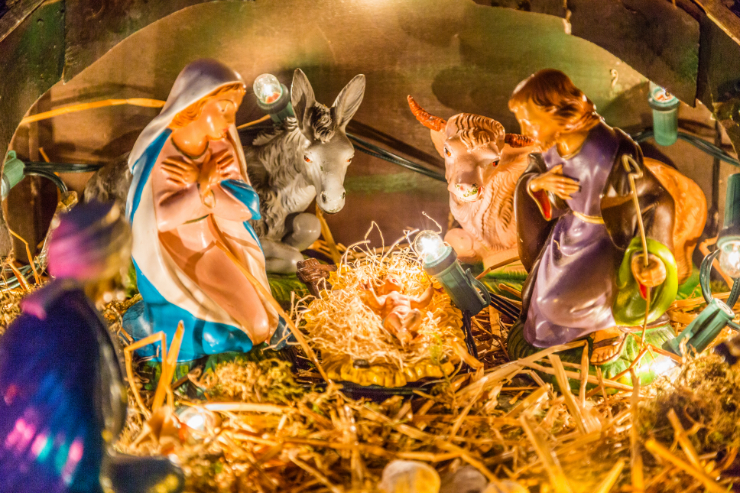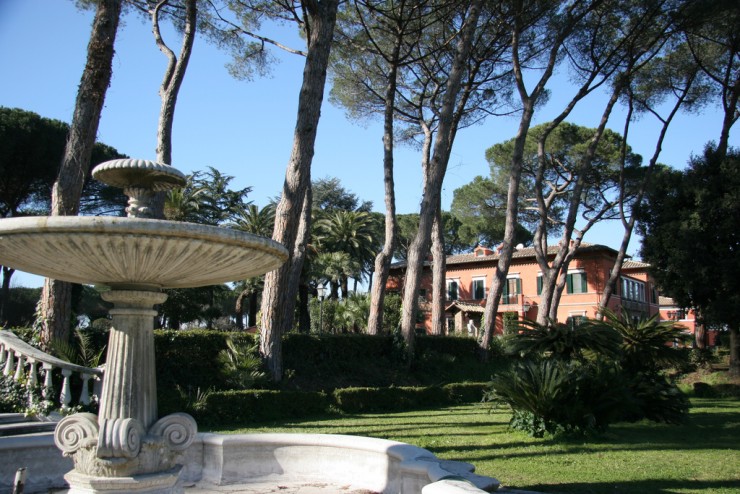 The most serious challenge for Christianity today isn’t one of the other great religions of the world, such as Islam or Buddhism.
The most serious challenge for Christianity today isn’t one of the other great religions of the world, such as Islam or Buddhism.
Nor is it simple atheism, which has no depth, no mass appeal, no staying power. Rather, it’s a religion most of us think is dead. That religion is paganism—and it is very much alive.
Paganism is simply the natural gravity of the human spirit, the line of least resistance, religion in its fallen state.
The “old” paganism came from the country. Indeed, the very word “paganism” comes from the Latin pagani, “from the fields” or “country-dwellers.” Country people were the last to be converted to Christianity during the Roman Empire, the last to abandon their ancestral roots in pre-Christian belief. Today, country people are the last to abandon Christianity for the “new” paganism, which flourishes in the cities.
The old paganism was a far greater thing than the new. In fact, Chesterton brilliantly summarized the entire spiritual history of the world in this one sentence: “Paganism was the biggest thing in the world, and Christianity was bigger and everything since has been comparatively small.”
There were at least three elements in the old paganism that made it great. And all three are missing in the new paganism
The first is the sense of piety (pietas), the natural religious instinct to respect something greater than yourself, the humility that instinctively realizes man’s subordinate place in the great scheme of things. “Moderation” or “temperance” went along with this, especially in classical civilization. The motto “nothing too much” was inscribed over every temple to Apollo, along with “know thyself.”
This natural modesty and respect contrast sharply with the arrogant attitude of the new pagan in the modern West. Only Oriental societies still preserve a traditional reverence. The West does not understand this, and thinks it quaint at best and hypocritical at worst.
The new paganism is the virtual divinization of man, the religion of man as the new God. One of its popular slogans, repeated often by Christians, is “the infinite value of the human person.” Its aim is building a heaven on earth, a secular salvation. Another word for the new paganism is humanism, the religion that will not lift up its head to the heavens but stuffs the heavens into its head.
A second ingredient of the old paganism that’s missing in the new is an objective morality, what C.S. Lewis called “the Tao” in his prophetic little classic “The Abolition of Man.” To pre-modern man, pagan as well as Christian, moral rules were absolute: unyielding and unquestionable. They were also objective: discovered rather than created, given in the nature of things.
This has all changed. The new paganism is situational and pragmatic. It says we are the makers of moral values. It not only finds the moral law written in the human heart but also by the human heart. It acknowledges no divine revelation, thus no one’s values can be judged to be wrong.
The new paganism’s favorite Scripture is “judge not.” The only judgment is the judgment against judging. The only thing wrong is the idea that there is a real wrong.
The only thing to feel guilty about is feeling guilty. And, since man rather than God is the origin of values, don’t impose “your” values on me (another favorite line).
This is really polytheism—many gods, many goods, many moralities. No one believes in Zeus and Apollo and Neptune any more. (I wonder why: Has science really refuted them—or is it due to total conformity to fashion, supine submission to newspapers?) But moral relativism is the equivalent of the old polytheism. Each of us has become a god or goddess, a giver of law rather than receiver.
A third ingredient of the old paganism but not of the new is awe at something transcendent, the sense of worship and mystery. What the old pagan worshiped differed widely—almost anything from Zeus to cows—but he worshiped something. In the modern world the very sense of worship is dying, even in our own liturgy, which sounds as if it were invented by a Committee for the Abolition of Poetry.
Our religious sense has dried up. Modern religion is de-mythologized, de-miraclized, de-divinized. God is not the Lord but the All, not transcendent but immanent, not super-natural but natural.
Pantheism is comfortable, and this is the modem summum bonum. The Force of “Star Wars” fame is a pantheistic God, and it is immensely popular, because it’s “like a book on the shelf,” as C.S. Lewis put it: available whenever you want it, but not bothersome when you don’t want it. How convenient to think we are bubbles in a divine froth rather than rebellious children of a righteous divine Father! Pantheism has no sense of sin, for sin means separation, and no one can ever be separated from the All. Thus the third feature, no transcendence, is connected with the second, no absolute morality.
The new paganism is a great triumph of wishful thinking. Without losing the thrill and patina of religion, the terror of religion is removed. The new paganism stoutly rejects “the fear of God.” Nearly all religious educators today, including many supposedly Catholic ones, are agreed that the thing the Bible calls “the beginning of wisdom” is instead the thing we must above all eradicate from the minds of the young with all the softly destructive power of the weapons of modern pop psychology—namely, the fear of the Lord.
“Perfect love casts out fear,” says St. John; but when God has become the Pillsbury Doughboy, there is no fear left to cast out. And when there is no fear to cast out, perfect love lacks its strong roots. It becomes instead mere compassion—something good but dull, or even weak: precisely the idea people have today of religion. The shock is gone. That the God of the Bible should love us is a thunderbolt; that the God of the new paganism should love us is a self-evident platitude.
The new paganism is winning not by opposing but by infiltrating the Church. It is cleverer than the old. It knows that any opposition from without, even by a vastly superior force, has never worked, for “the blood of the martyrs is the seed of the Church.” When China welcomed Western missionaries, there were 2 million conversions in 60 years; when Mao and communism persecuted the Church, there were 20 million conversions in 20 years. The Church in East Germany is immensely stronger than the Church in West Germany for the same reason. The new paganism understands this, so it uses the soft, suggestive strategy of the serpent. It whispers, in the words of Scripture scholars, the very words of the serpent: “Has God really said…?” (Gen. 3:1).
The new paganism is a joining of forces by three of the enemies of theism: humanism, polytheism and pantheism. The only five possibilities for ultimate meaning and values are: atheism (no God); humanism (man as God); polytheism (many gods); pantheism (one immanent God); and theism (one transcendent God). The Battle of the Five Kings in the Valley of Armageddon might, in our era, be beginning. Predictions are always unwise, but the signs of the times, for some thoughtful observers, point to a fundamental turning point, the end of an age.
The so-called “New Age Movement” combines all the features described under the title of the new paganism. It’s a loosely organized movement, basically a reflowering of ’60s hippiedom, rather than a centralized agenda. But strategies are connected in three places. There may be no conspiracy on earth to unify the enemies of the Church, but the strategy of hell is more than the strategy of earth. Only one thing is more than the strategy of hell: the strategy of heaven.
The gates of hell cannot prevail against the Church; in fact, God uses the devil to defeat the devil, just as He did on Calvary, when the forces of the Hebrew, Greek and Roman worlds united to crucify Christ, as symbolized by the three languages on the accusation sign over the cross.
The very triumph of the devil, the death of God, was the defeat of the devil, the redemption of mankind, “Good Friday” Because God, who spoke the first word, always gets the last word.
Please help us in our mission to assist readers to integrate their Catholic faith, family and work. Share this article with your family and friends via email and social media. We value your comments and encourage you to leave your thoughts below. Thank you! – The Editors












